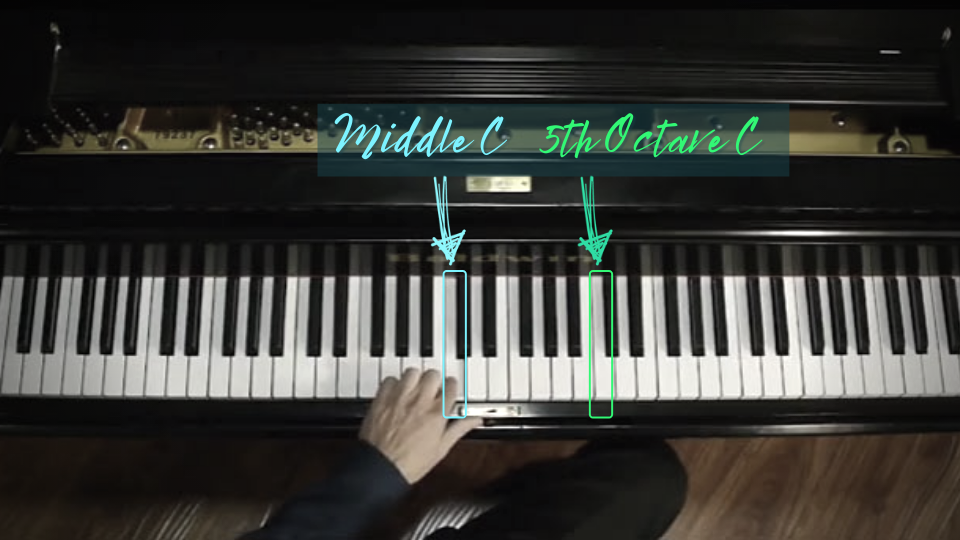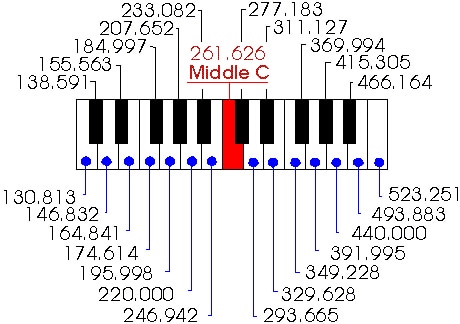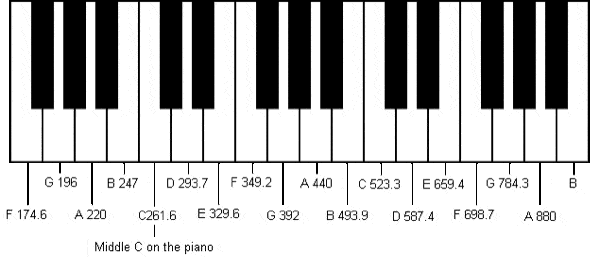


Only in the Late Middle Ages did they began to employ slaves as rowers.
MUSIC NOTE C IN HERTX FREE
Ancient navies during the time of Odysseus and Argonauts as well as navies during the Middle Ages and later Vikings on their longships preferred to rely on free men as rowers. Contrary to the popular belief about the sad fate of the galley slaves, they were not usually put at the oars. Rowers on war galleys of all ages and nations did their job listening to the beat of drums setting the pace of rowing. Sound fought not only on land - from time immemorial boatswain calls had been used to pass various commands to the ship’s deckhand on sail handling. A modern music synthesizer capable of replacing all instruments and, among other things, to play pre-programmed rhythm imitating percussion instruments and basslines can be considered the evolutionary peak of musical instruments. However, they could not be used to play military music to inspire combatants or to assist in communication in battle because probably no one would hear the sounds of lyres, citterns, lutes, and harps on the battlefield. When mankind has entered the age of metals, string instruments appeared. Then, most probably, wind instruments appeared, as obvious evolution from seashells and horns of hoofed animals, from a simple whistle or a pipe made of a piece of hollow cane or a green willow twig to modern flutes, oboes, trumpets, saxophones, and organs. They have evolved from a hollow half-rotten tree trunk to modern electronic drum kits. Probably the first musical instruments were percussion instruments. These capabilities lead us to the creation of a completely different, artificial world of sounds - music. Besides, in comparison to animals, humans can accurately sense the sound frequency and especially the difference in frequencies of different sounds. Where c is the speed of sound in air at 20 ☌ (60 ☏), which is approximately 343 m/s or 1125 ft/s. The wavelength λ of a musical note with a frequency f n can be calculated as The frequency 440.2542274 Hz is 1 cent above A4: The formula above gives n b = 100.0008857 ≈ 100 cents To calculate the bias from a note in cents n b from known frequency f n, we will use the following formula:įor example, A4♯/B4♭ has the frequency of 466.164 Hz. In other words, one cent is 1/100 of a semitone. The cent is a dimensionless logarithmic unit of measurement of musical intervals defined as the ratio of two frequencies f 1 and f 2, which is equal to:ġ00 cents make one semitone of the equal-tempered scale. Note that the ratio of the frequencies of the two notes in any semitone interval a is equal to the twelfth root of 2: There are 88 notes in the standard piano keyboard, from note A0 (sub-contra octave), which is the piano note 0 with a frequency of 27.500 Hz, to note C8, which is the piano note 88 with a frequency of 4186.009 Hz. To calculate frequencies of musical notes from known standard (88-key) piano note number n p and the standard pitch A440, and vice versa, we can use the following formulas:


There are 128 notes in the MIDI standard (0 to 127), from the note C–1 (minus 1), which is the MIDI note 0 with a frequency of 8.176 Hz, to the note G9, which is the MIDI note 127 with a frequency of 13289.750 Hz. To calculate frequencies of musical notes from known MIDI note number n m and the standard pitch A440, and vice versa, we can use these formulas: The formula above can be modified to calculate the number n of semitones away from the standard pitch f 0: N is the number of semitones (half steps) from the standard pitch n > 0 for notes higher than the standard pitch, and n < 0 for notes lower than the standard pitch. It is usually a standard (also called concert) pitch of 440 Hz, which is called A440 or note A in the one-line (or fourth) octave (A4) The basic formula to calculate frequencies of musical notes of the equal-tempered scale:į n is the frequency of the note, which is n semitones (or half steps) away from the standard pitch A440 į 0 is the frequency of a fixed note, which is used as a standard for tuning.


 0 kommentar(er)
0 kommentar(er)
